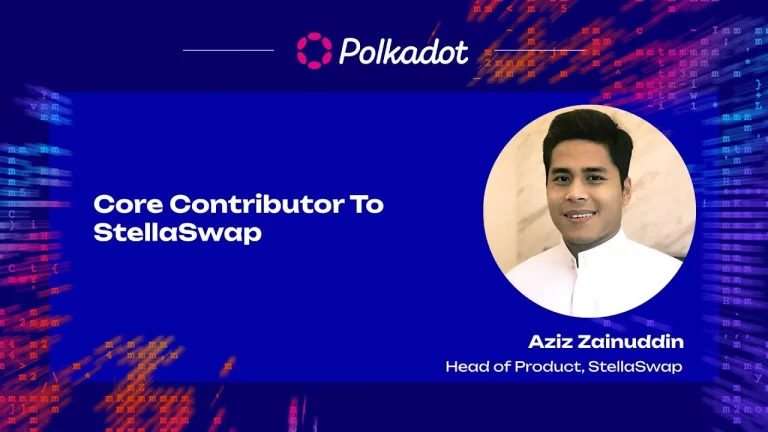As the Polkadot ecosystem expands, developers and blockchain enthusiasts are increasingly seeking tools that simplify interaction with this multi-chain platform. Among the essential tools that stand out in the Polkadot ecosystem are Reactive DOT, the Polkadot API, Polkadot Onboard, and Polkadot.js. These frontend tools play a critical role in making Polkadot more accessible and user-friendly, enabling developers to build more efficient and responsive applications on the network.
1. Reactive DOT: A Streamlined Approach to Polkadot Development
Reactive DOT is an innovative frontend tool designed to simplify the development of decentralized applications (dApps) on the Polkadot network. It offers a reactive programming framework that allows developers to build responsive and dynamic user interfaces by directly integrating with the Polkadot blockchain.
Reactive DOT Key Features:
- Reactive Programming Paradigm: Reactive DOT leverages reactive programming principles, which are essential for creating applications that respond efficiently to real-time data changes.
- Seamless Integration with Polkadot: Designed with the Polkadot ecosystem in mind, Reactive DOT provides out-of-the-box support for Polkadot’s unique features, enabling easy integration into applications.
- Component-Based Architecture: Promotes a modular approach, allowing for the creation of reusable components that enhance application scalability and maintainability.
- Developer-Friendly Tools: A comprehensive suite of tools streamlines the development process, from debugging to deployment, making blockchain interactions easier to manage.
Reactive DOT empowers developers to build responsive, scalable, and efficient dApps on Polkadot, making it an invaluable tool in the Polkadot developer’s toolkit.
2. Polkadot API: A Comprehensive Interface for Blockchain Interaction
The Polkadot API, aka PAPI, commonly referred to as @polkadot/api, is a powerful frontend tool that provides a complete interface for interacting with the Polkadot blockchain. This JavaScript-based API is a crucial resource for developers building applications on Polkadot and its parachains, offering a wide range of functionalities that simplify blockchain interactions.
Key Features of Polkadot API:
- Full Blockchain Access: Provides complete access to the Polkadot blockchain, allowing for detailed interactions such as querying data, submitting transactions, and interacting with smart contracts.
- Comprehensive Documentation: Extensive documentation and examples make it easier for developers to learn and implement the API in their projects.
- TypeScript Support: Fully written in TypeScript, it offers type safety and autocompletion, reducing the likelihood of errors during development.
- Integration with Other Tools: Designed for seamless integration with other Polkadot ecosystem tools, making it versatile for various applications.
- Community and Ecosystem Support: Backed by a strong community, the API is regularly updated to align with the latest developments in Polkadot.
The Polkadot API is a foundational tool for developers looking to build on Polkadot, providing the necessary resources to interact effectively with the blockchain.
3. Polkadot Onboard: Simplifying Wallet Integration
@polkadot-onboard provides a set of packages for developers to easily onboard and integrate different types of Polkadot wallets into their dApps. It offers a universal interface for working with various wallets, including injected wallets, WalletConnect, and hardware wallets.
Key Features of Polkadot Onboard:
- Universal Wallet Interface: Provides a consistent and easy-to-use interface for interacting with different types of wallets, ensuring a smooth integration process.
- Support for Multiple Wallets: Polkadot Onboard supports a wide range of wallets, including injected wallets, WalletConnect, and hardware wallets, making it a versatile tool for developers.
- Customizable Integration: Developers can tailor the onboarding process to suit their specific application needs, enhancing the user experience and ensuring seamless wallet connectivity.
- Open-Source and Community Driven: As an open-source project, Polkadot Onboard benefits from continuous contributions and updates from the Polkadot community.
Polkadot Onboard is a crucial tool for developers looking to simplify wallet integration and improve the onboarding experience for users within the Polkadot ecosystem.
4. Polkadot.js: The Versatile Frontend Library
Polkadot.js is a comprehensive JavaScript library that offers a wide range of functionalities for interacting with the Polkadot and Substrate-based blockchains. It is widely used by developers to build web applications that interact seamlessly with Polkadot.
Key Features of Polkadot.js:
- Full API Coverage: Polkadot.js provides extensive coverage of Polkadot’s API, enabling developers to query chain state, submit transactions, and interact with smart contracts directly from their web applications.
- User-Friendly Interfaces: The library includes user-friendly interfaces for common tasks, such as managing accounts, signing transactions, and interacting with the blockchain.
- Rich Ecosystem of Tools: Beyond the core API, Polkadot.js includes a suite of additional tools like the Polkadot.js Apps, which provides a browser-based interface for interacting with the network.
- Extensive Documentation and Examples: Polkadot.js is well-documented, with a rich collection of examples and tutorials to help developers quickly get up to speed.
- Broad Compatibility: Polkadot.js is compatible with both Polkadot and Kusama, as well as other Substrate-based chains, making it a versatile choice for developers working within the Polkadot ecosystem.
Polkadot.js is a vital resource for developers building on Polkadot, offering a flexible and powerful toolkit for interacting with the network.
5. More Polkadot Frontend Development Resources
To learn about more libraries and resources to develop applications in Polkadot, you can consult the following links:
- Polkadot Frontend Development Experience – Polkadot Forum,
- Polkadot Development Tools – Polkadot Wiki.
- 40 Resources to Learn Polkadot Development – Dablock.
Conclusion
Reactive DOT, the Polkadot API (PAPI), Polkadot Onboard, and Polkadot.js are all critical tools in the Polkadot ecosystem, each serving a unique role in simplifying the development and onboarding process. Reactive DOT offers a framework for building dynamic dApps, the Polkadot API provides a comprehensive interface for blockchain interactions, Polkadot Onboard simplifies wallet integration, and Polkadot.js is the first frontend library for developers, but now is no longer recommended as it is right now only in maintenance mode. Together, these tools empower developers and users alike, driving innovation and adoption within the Polkadot ecosystem. As the network continues to grow, the role of these tools will only become more significant, fostering a more robust and accessible blockchain environment.








